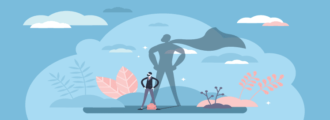Staffing, recruiting, and other processes to fill business-critical positions can be a hassle, especially for teams with disconnected systems and a lack of resources to properly manage and maintain those positions.
Fortunately, this is where Workday Position Management comes in.
Read on to learn more about the Position Management definition, its key components and features, and the significant ways it can benefit your organization.
The Lowdown on Position Management
Position management involves the strategic oversight and administration of organizational roles, ensuring alignment with business objectives, and facilitating effective workforce planning by defining the responsibilities, qualifications, and reporting structures associated with each position. It is a crucial component of human resource management, enabling organizations to optimize their workforce structure for efficiency and productivity.
What is Position Management?
Position Management is a comprehensive Workday model used to create, fill, and maintain positions in an organization. The solution offers advanced commitment accounting and budget control functions that allow users to monitor multiple positions (i.e., open, available, filled, etc.), edit position restrictions, create role assignments, and manage hiring restrictions for each position.
Position Management enables companies to:
- Determine how many positions need to be filled
- Create job requisitions to fill empty positions
- Define and monitor position restrictions and requirements
- Understand budgets and track employee headcount
Benefits of Position Management
Now that you know a little more about what position management is, here are a few of the main benefits of the model:
- Improved workforce planning accuracy and efficiency
- Better opportunities for organizational recruiting and internal mobility
- Enhanced budget and payroll accuracy
- Process improvement for human capital reporting
Key Components of Workday Position Management
Managing positions accurately and effectively is important in filling critical roles and optimizing overall organizational productivity. Here are the key components of this position control software from Workday:
Position
A Workday position is a field assigned to a job profile rather than a person. Each employee must be assigned to a specific position in the organization or department, and a single position can only be occupied by one employee at a time. In the Workday system, security roles and permissions are related to the position, not the employee.
Think about it like this: If a position were an office chair, a company would need one chair for each employee, and employees could not switch chairs or get a new chair without addressing qualifications or requirements.
Supervisory Organization
In Workday Position Management, a supervisory organization is a team of employees consisting of a people operations manager and the employees who work directly under their supervision. Supervisory organizations are hierarchical, and they outline which employees report to which managers in the organization.

Supervisory organizations are the primary foundation of the Workday organization structure, helping organizations improve record data visibility, enhance process and task management functions, support reporting relationships, and route business processes more efficiently.
Job Requisition
A job requisition is the first step in the talent acquisition process and involves a formal request by a department manager to create or fill a vacant position. Job requisition forms include a few common elements, regardless of the nature or size of the company:
- Job title
- Job purpose
- Reason for requisition
- Job hours and duration
- Qualifications
Worker
A worker is an employee who occupies a position within the Workday system, and position history is tracked throughout the entire employee lifecycle. Suppose a worker is separated or transferred from their current role in Workday. In that case, position attributes will remain related to the position, and the position will continue to exist unless it is closed by a member of the human resources (HR) team.
Position Management Best Practices
- Outline change management strategies: Because position management models often combine structure, process, and technology, change management plans can be make-or-break factors for your organization. Change management strategies are essential in preparing teams for a new system, new position, or new employee.
- Focus on system coordination: Coordination between Finance and HR departments is essential in maximizing the benefits of the Workday Position Management model. Accurate and efficient position management requires consistency across an organization, including processes, documentation, and protocol approval.
- Continuously monitor position changes: As a result of continuous employee movement, whether through promotion, transfer, leave, or any other reason, positions must be continuously monitored to ensure all business-critical positions are filled. Without continuous maintenance, positions may become outdated or misaligned with organizational structure changes.
Ready to Integrate Workday Position Management Into Your People Operations?
Unlock the full potential of your HR and finance operations with expert Workday Consulting services. Take your workforce and financial management to the next level for better business outcomes.
Get in TouchPosition Management vs Job Management
The Job Management model outlines and defines hiring restrictions and improves system flexibility by eliminating specific limits on jobs to be filled.
Job Management solutions are also easier to deploy throughout an organization because they require less coordination between departments (i.e., Finance and Human Resources) and different planning and governance responsibilities.
In Job Management, there is no position layering or pre-determined relationships between employees and jobs, and requisitions are created on an individual job basis.
How Can We Help?
Whether you need help aligning your teams to optimize position management efficiency, building position management or staffing models, or anything in between, our team of senior-level Workday consultants is here to help.
We’ve also included a sample profile of one of our Workday consultants to give you an idea of what to expect when partnering with us:
Surety Senior Workday Position Management Consultant
- 6+ years of Workday experience, 18+ years of HR experience
- Workday HCM certified
- SME in Position Management, Product Management on Workday HCM, Talent Management Module Absence Management, and Time Management
- Expert in creating and implementing Workday Absence Management and Acquisition, Reporting, Security, Learning, and Performance Management
- Support all system integrations in Recruiting and Position Management
Ready to get started? Contact us today.




